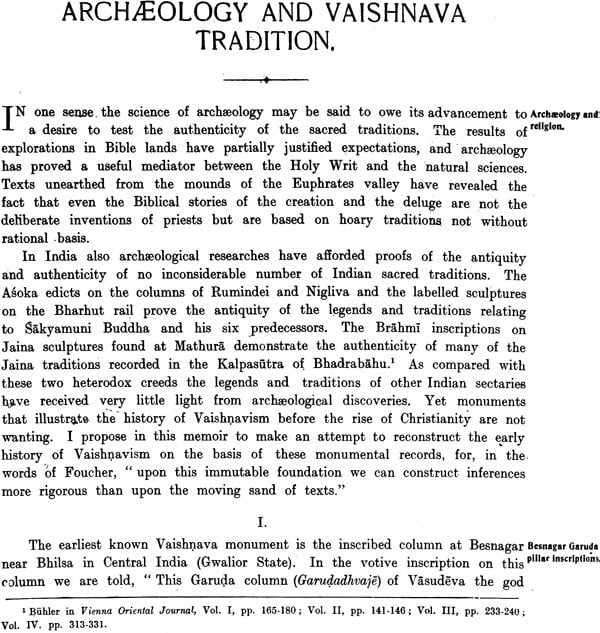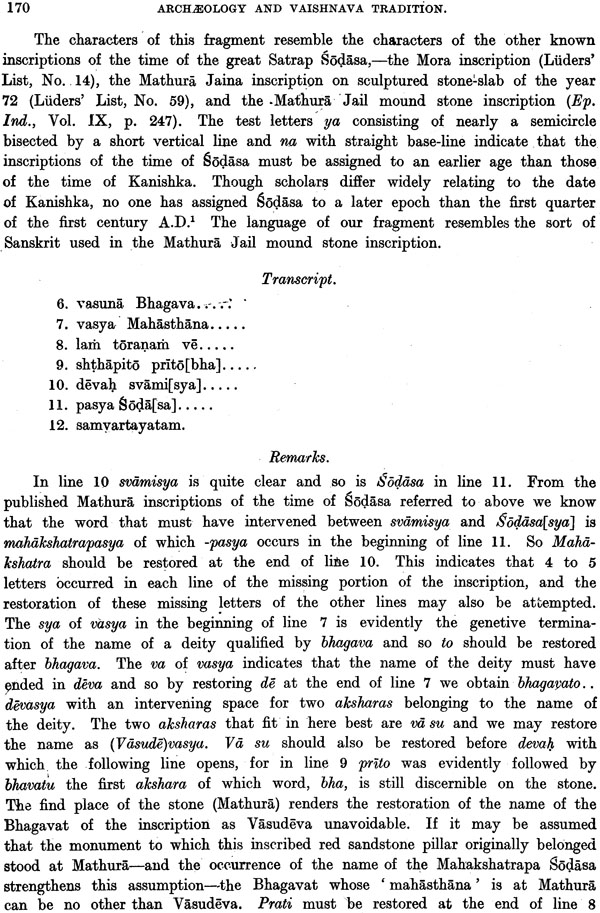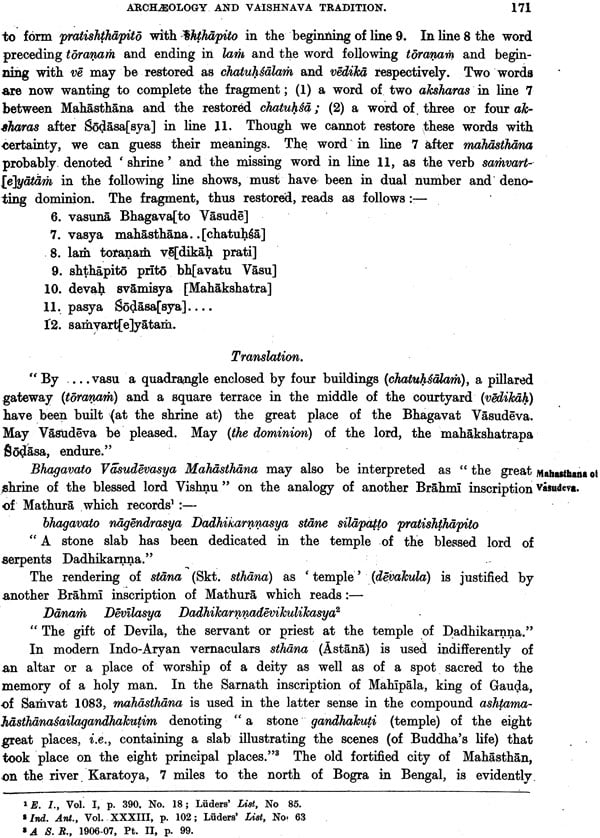
Archaeology and Vaishnava Tradition
Book Specification
| Item Code: | IDD813 |
| Author: | RAMPRASAD CHANDA |
| Publisher: | Archaeological Survey of India |
| Language: | English |
| Edition: | 1998 |
| Pages: | 22 (B & W Illus: 3) |
| Cover: | Hardcover |
| Other Details | 10.6" X 8.4" |
| Weight | 300 gm |
Book Description
In one sense the science of archaeology may be said to owe its advancement to a desire to test the authenticity of the sacred traditions. The results of explorations in Bible lands have partially justified expectations, and archaeology has proved a useful mediator between the Holy Writ and the natural sciences. Text unearthed from the mounds of the Euphrates valley have revealed the fact that even the Biblical stories of the creation and the deluge are not the deliberate inventions of priests but are based on hoary traditions not without rational basis.
In India also archaeological researches have afforded proofs of the antiquity and authenticity of no inconsiderable number of Indian sacred traditions. The Asoka edicts on the columns of Rumindei and Nigliva and the labelled sculptures on the Bharhut rail prove the antiquity of the legends and traditions relating to Sakyamuni Buddha and his six predecessors. The Brahmi inscriptions on Jaina sculptures found at Mathura demonstrate the authenticity of many of the Jaina traditions recorded in the Kalpasutra of Bhadrabahu. As compared with these two heterodox creeds the legends and traditions of other Indian sectaries have received very little light from archaeological discoveries. Yet monuments that illustrate the history of Vaishnavism before the rise of Christianity are not wanting. I propose in this memoir to make an attempt to reconstruct the early history of Vaishnavism on the basis of these monumental records, for, in the words of Foucher, "upon this immutable foundation we can construct inferences more rigorous than upon the moving sand of texts." The earliest known Vaishnava monument is the inscribed column at Besnagar near Bhilsa in Central India (Gwalior State). In the votive inscription on this column we are told, "This Garuda column (garudadhvaje) of Vasudeva the god of gods (devadeva) was erected here by Heliodorus, the son of Dion, and an inhabitant of Taxila, who came as Greek ambassador from Maharaja Antialkidas to King Kasiputra Bhagabhadra." Antialkidas is supposed to be one of the earlier members of the line of Eucratides, who came to the throne of Bactria about 171 B. C. after outsting Demetrius. The archaic type of Brahmi characters used in the inscription of Heliodorus indicates that it was probably engraved some time in the first half of the second century B. C.
A fragment of the shaft of another octagonal Garuda column evidently from Besnagar found in a narrow street of Bhilsa and now preserved in the Besnagar Museum bears a Brahmi inscription in one line on seven out of its eight sides. The occurrence of angular gas side by side with round gas and of angular tas shows that this record must be assigned to about the close of the second century B. C. The inscription, which has been deciphered by Venis with a good deal of skill, reads as follows:-
(1) Gotamaputena (2) bhagavate[na]
(3) ......(4) [Bhagava] to prasa [do]ta-
(5) masa Garudadhvaja[karito] (6) [dva]dasa-vas-abhisite
(7) ...Bhagavatema.
Professor Bhandarkar takes bhagavatena on the second side as the name of the donor. The name of the donor was evidently given on the third side where no trace of it now remains, and Venis appears to be correct in taking bhagavatenaas an adjective qualifying that name. So the epigraph may be thus translated:-




Click Here for More Books Published By Archaeological Survey of India





